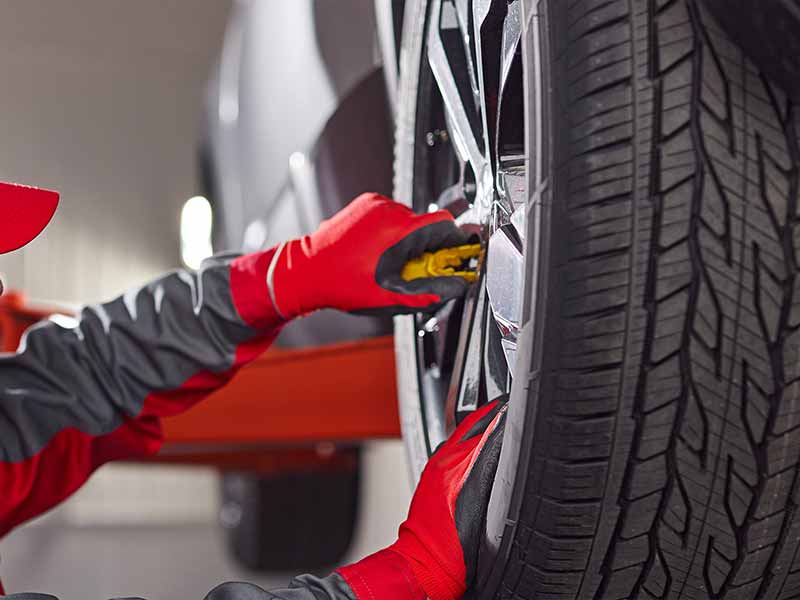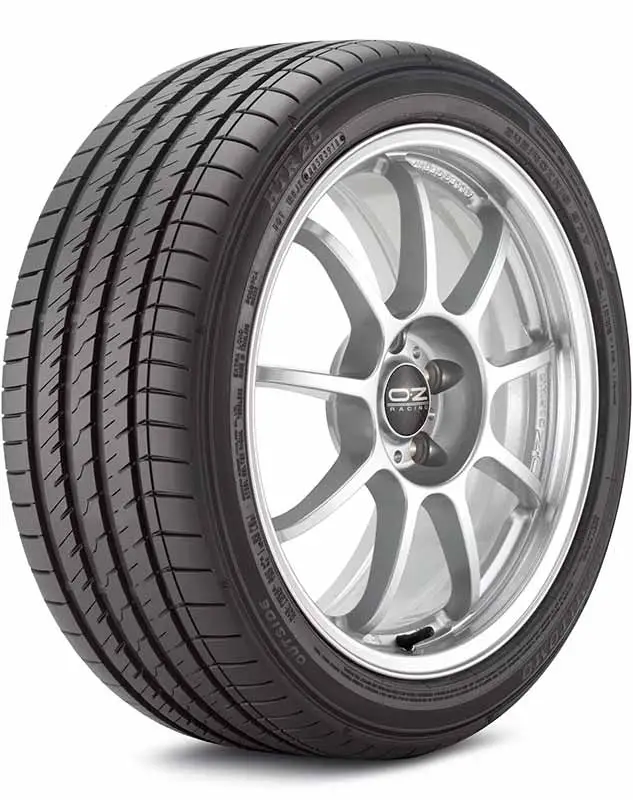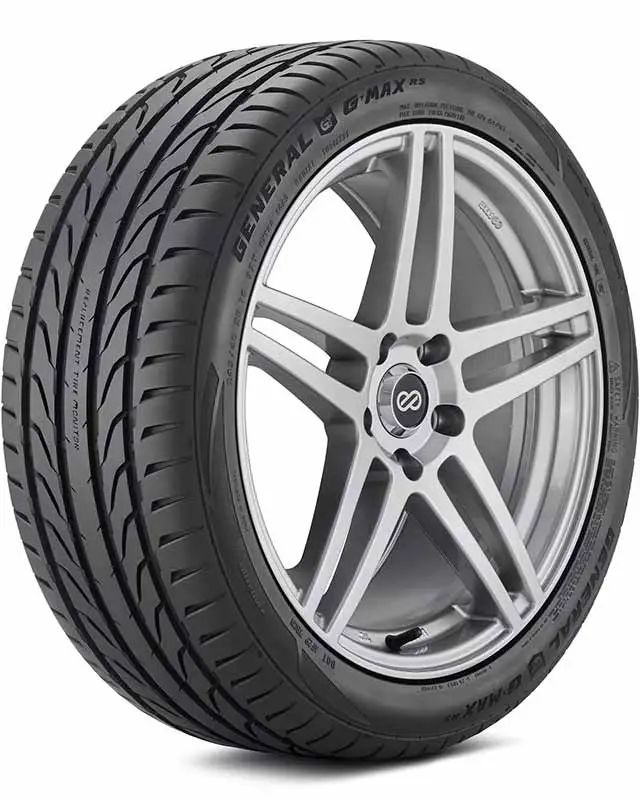It can be tricky to figure out which tire has lost a wheel weight or has a bent rim. Unbalanced tires will cause vibration in the steering wheel and seat that may alert you to the problem but not make it possible to determine which tire is the problem.
How To Tell Which Tire Is Out Of Balance
To tell which tire is out of balance, you can use one of the following methods:
- Feel around the circumference of each tire for tire wear, known as cupping.
- Put your vehicle on jack stands, spin each wheel, and look for a wobble.
- Move tires from front to rear axle or side to side systematically.
It’s important to get your tires balanced as soon as possible if you notice any unbalanced tire symptoms. An unbalanced tire can cause uneven wear patterns that can lead to blowouts or other dangerous driving conditions.
Let’s take a closer look.
Methods For Identifying An Out Of Balance Tire
Figuring out which tire is causing the trouble can be tricky, but we’ve got a few different methods to help you identify the culprit. Let’s look at each of these methods and get you back on the road.
Feel For Tire Cupping
Cupping tire wear happens when the tire develops uneven wear patterns around the circumference of the tire. It can feel like raised and lowered sections as you run your hand over the tire.
This uneven wear can cause vibrations that can be felt through the steering wheel or even the entire vehicle. To check for cupping tire wear, run your hand over each tire in a smooth and even motion. Pay attention to any raised or lowered sections, and check for any unusual wear patterns.
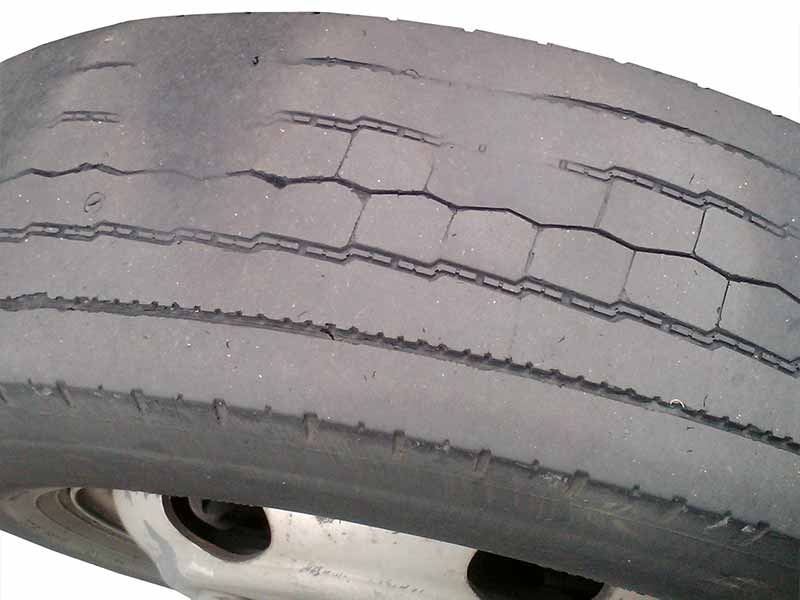
Spin Wheels And Look For Wobble
Balancing issues in tires can cause vibrations that you can feel through the steering wheel or seat while driving. If you suspect that one of your tires is out of balance, here are some steps you can take to identify the problematic tire at home:
- Start by checking the air pressure in all your tires. Make sure each tire is inflated to the recommended pressure, which can be found in your car owner’s manual or on a sticker inside the driver’s door jamb.
- Next, park your car on a level surface and chock the wheels to prevent it from moving. Then, lift one wheel off the ground using a jack and jack stands.
- Spin the wheel slowly and observe it as it rotates. If the tire is out of balance, you may notice a wobbling or bouncing motion or hear a humming sound.
- Repeat the process for each tire, one at a time, until you identify the tire that is causing the problem.
Another tip you can try is swapping the suspect tire with another tire on your car or truck to see if the vibrations continue. If the vibrations transfer to the new location, the tire is likely the source of the problem.
However, if the vibrations remain in the same location, the issue may be with your wheel or suspension system and requires a mechanic’s attention.
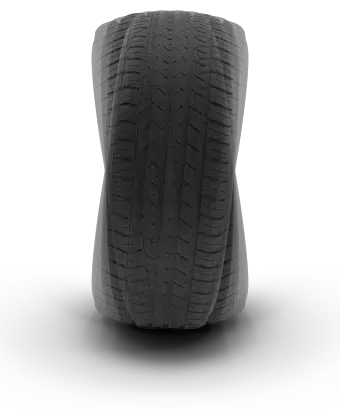
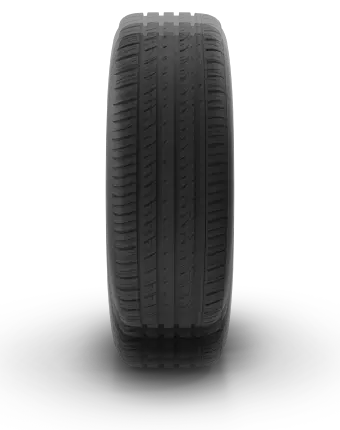
Move Tires Systematically
Here’s how it works: Start by swapping the front tires with each other, then the rear tires with each other. If the vibrations don’t change or move, the problem tire is most likely on one of the ends you didn’t move.
For example, if you swapped the front tires and the vibrations are still felt through the steering wheel, the problematic tire is likely one of the back tires. Similarly, if you swapped the rear tires and the vibrations are still present, the issue is most likely with one of the front tires.
If the vibrations do change or move after swapping the tires, it’s a good indicator that the problematic tire is one of the ones you moved. For example, if the vibrations were initially felt through the steering wheel but after swapping the front tires, they’re now felt through the seat, the problematic tire is most likely one of the front tires.
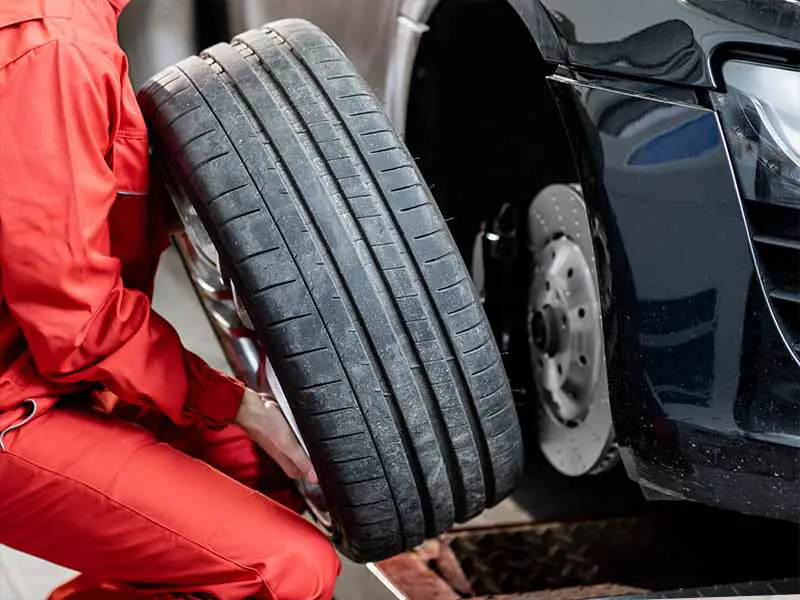
What Does An Out Of Balance Tire Feel Like?
An out-of-balance tire can cause vibrations in the steering wheel, seat, or floorboard that increase as you drive faster. You might feel like you’re driving on a bumpy road, even if the pavement is smooth.
In some cases, an out-of-balance tire can also cause your car or truck to pull to one side, making it harder to steer in a straight line. You might also notice that your tires are wearing unevenly or that the tread is wearing down faster than it should be.
Front Tire Out Of Balance Symptoms
One of the most common signs is vibrations in the steering wheel. This can start out as a subtle shaking that gets worse the faster you go. Over time, the vibrations can become more noticeable and distracting, making it harder to focus on the road ahead.
Another symptom of a front tire that’s out of balance is uneven tire wear. You might notice that one side of the tire is wearing down faster than the other or that the tread is wearing down in a diagonal pattern. This is a result of the tire bouncing and vibrating on the road, which can cause it to wear down in certain areas more quickly than others.
Sometimes, an out-of-balance front tire can also cause your car to pull to one side or the other. This can make it harder to steer in a straight line, which can be dangerous, especially at high speeds.

Rear Tire Out Of Balance Symptoms
You might feel a subtle shaking that gets worse the faster you go. One of the most common symptoms is vibrations in the seat or floorboard of your car or truck. This can be especially noticeable if you have a rear-wheel-drive vehicle since the vibrations will be felt more in the back end.
Another symptom of an out-of-balance rear tire is uneven tire wear. You might notice that one side of the tire is wearing down faster than the other or that the tread is wearing down in a diagonal pattern. This is because the tire bounces and vibrates on the road, which can cause it to wear down in certain areas more quickly than others.
In some cases more extreme cases, an out-of-balance rear tire can also cause your car to fishtail or sway from side to side. This can be especially dangerous at high speeds or on wet or slippery roads.
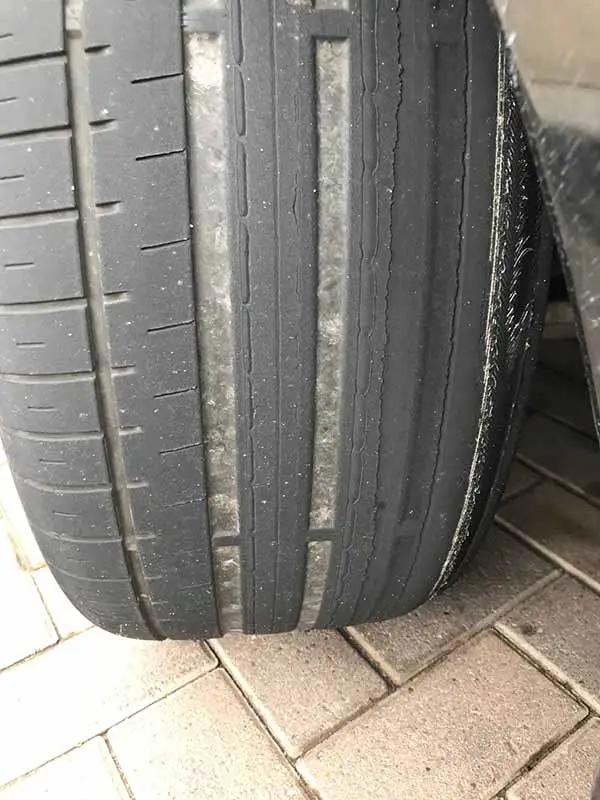
How To Balance Tires Yourself
If you want to balance your tires, using an inexpensive bubble tire balancer can be an affordable and effective option.
Here’s how to do it:
First, remove the tire from your car and clean it thoroughly. Once the tire is clean, mount it on the balancer. A bubble balancer has a bubble level that indicates whether the tire is balanced or not.
You’ll need to add weight to the heavier side to balance the tire. You can do this by attaching adhesive wheel weights to the inside of the rim. Start with a small weight, and then test the balance again by checking the bubble’s position on the bubble level. If the bubble is still not in the center, add more weight until it is.
Once the tire is balanced, mark the position of the weights on the rim so that you can easily identify them in the future. Then, remount the tire on your car and test drive it to make sure it’s running smoothly.
Using a bubble tire balancer is a simple and affordable way to balance your tires at home, but it’s important to know that it may not be as accurate as professional equipment. So, if you’re not confident in your ability to balance your tires or you’re experiencing significant vibration or other issues, it’s always best to take your car to a professional.

Bubble Tire Balancer Example
What Causes Tires To Become Unbalanced?
Tires can become unbalanced for a variety of reasons. One common cause is normal wear and tear over time. As tires wear down, they can develop flat spots or other irregularities that can cause them to vibrate or wobble when they rotate.
One of the most common causes of unbalanced tires is wheel weights falling off or coming loose. Wheel weights are small, metal weights that are attached to your wheels to balance them out. Over time, these weights can become loose or fall off completely, which can cause your tires to become unbalanced.
Another common cause of unbalanced tires and wheels is damage to the tire or rim. If you hit a curb or pothole, for example, it can cause a dent or other damage to the rim that can throw off the balance of the tire and wheel assembly. For instance, a severely damaged tire with a sidewall bubble can also throw off tire balance.
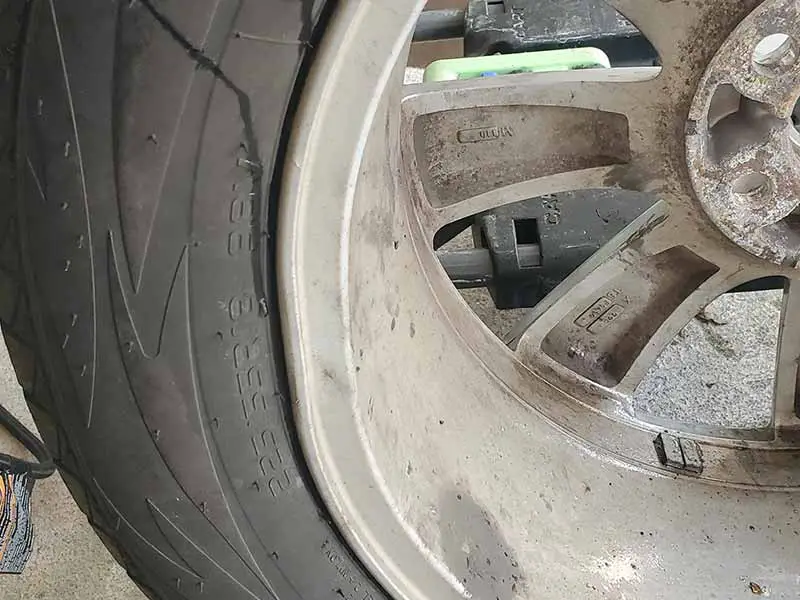
Tire balance can be affected by uneven weight distribution. Frequently carrying heavy loads in your car or truck can put extra stress on certain tires and cause them to become unbalanced over time.
Finally, poor installation can also cause tire balance problems. If your wheels and tires aren’t correctly mounted and balanced when they’re installed, they can develop balance issues down the road, if not immediately.
Resources
Below are some links you may find helpful when learning about tires
- How do I know if my tires need to be balanced? – Les Schwab
- What causes tires to be out of balance? – Lithia Motors
Final Thoughts
We’ve covered several different methods for identifying which tire is out of balance, from feeling for tire cupping to spinning wheels and looking for wobble. By using these methods, you should be able to pinpoint the problem tire and get it fixed and enjoy a smooth, comfortable ride once again.
Remember, if you’re experiencing vibrations or wobbling while driving, it’s always best to have your tires checked out by a professional. They’ll be able to diagnose the problem and recommend the best course of action to get you back on the road safely.
Good luck and happy motoring.
